Hamilton Revisited
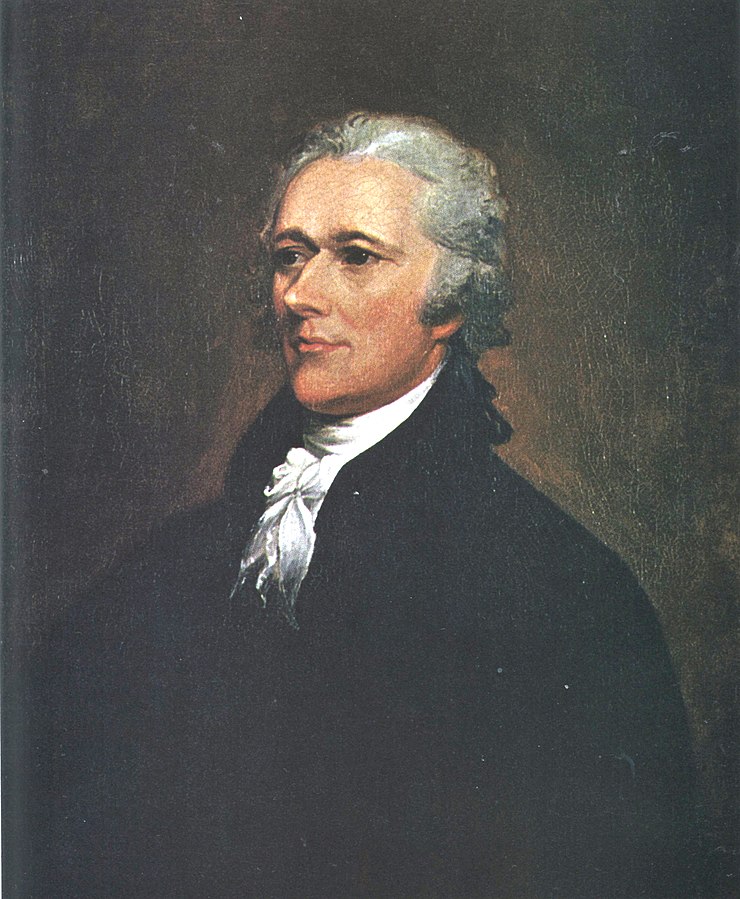
Over two years ago, I published my first article on my brand new website. In that article, entitled “The Sexuality of Alexander Hamilton”, I argued that Hamilton was bisexual, and presented a few lovers he most likely had, some male and some female. My roster of men that Hamilton may have had affairs with has for a long time included the two men described in that article, Robert Troup and John Laurens, as well as Hamilton’s friends Fisher Ames and Gouvernor Morris. Recently however, I’ve researched some of these men individually, and in some cases realized I didn’t have the evidence I thought I had. I no longer feel I have enough evidence to say Troup or Morris were anything other than Hamilton’s friends. To learn more about how I reached that conclusion with Troup, you can read my article on him here. To see why Morris didn’t make the cut, you can read my article on him here. I’ve also done more research on Hamilton’s early relationship with the woman who would become his wife, Elizabeth Schuyler, and I have new thoughts on that. (My thoughts on his affair with Maria Reynolds have not changed, so we’ll leave her alone for now.) So in this article we’ll look at my new thoughts on Schuyler, why I gave up on Ames, at the potential relationships I haven’t eliminated, and at a possible lover who probably should have made it on the roster much sooner.
John Laurens
By now you all know who John Laurens is. If you need a refresher on his biographical info, or the evidence we have that he was gay outside of his relationship with Hamilton, you can read my article on Laurens’s sexualiy. I’ve also written a detailed timeline of Hamilton and Laurens’s relationship, as well as a thorough analysis of their correspondence.
Obviously I’ve already shared a lot of information with all of you about this relationship; but for the purpose of reevaluating what we know about Hamilton’s sexuality, I’ll go over the main points of my argument about Hamilton and Laurens again. If you’ve read all of my past articles on Hamilton and Laurens, you can probably skip this part and move on to Fisher Ames.
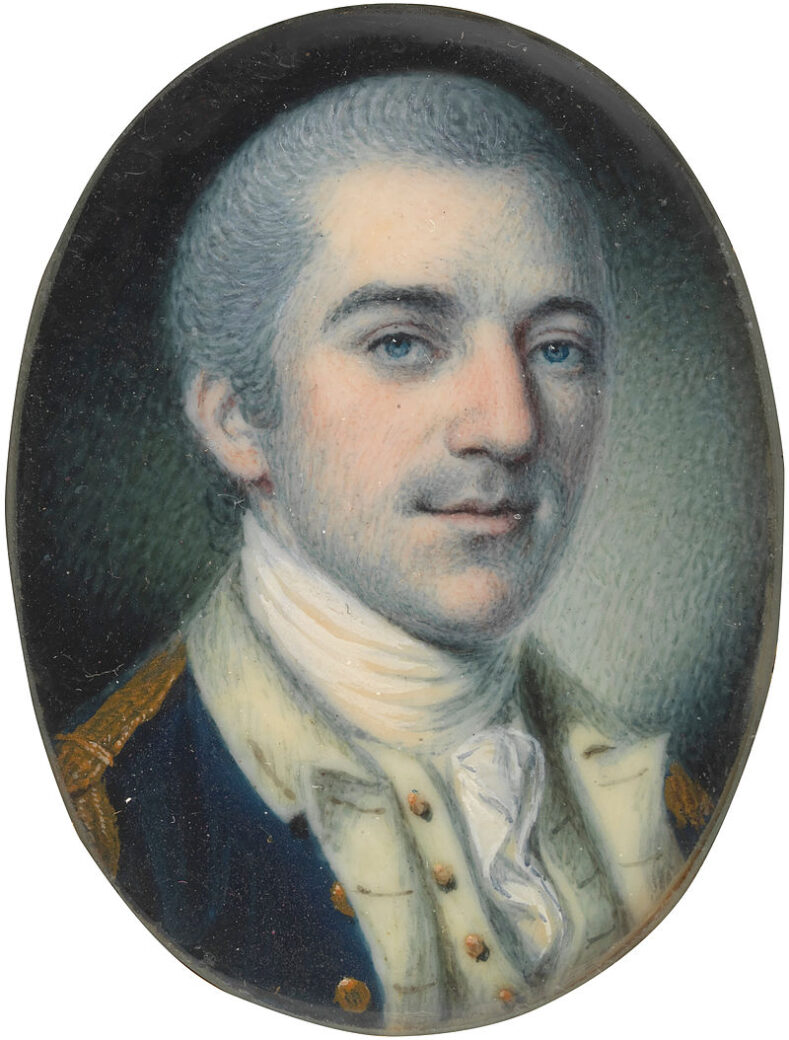
First thing: although Laurens’s letters to Hamilton may not display a ton of affection, they actually display a lot more than he showed to almost anyone else. This can be seen most clearly in the way he addressed Hamilton. From very early on in the correspondence, Laurens almost always calls Hamilton “my dear boy.” As the well-researched, properly cited John-Laurens Tumblr blog has pointed out, Laurens did not use this address for anyone else, with the notable exception of his wife, whom he called “my dear girl.”¹
Then there’s the fact that Laurens apparently knew what Hamilton’s penis looked like. In one letter, while jokingly instructing Laurens to publish an ad seeking a wife for Hamilton, Hamilton reminds Laurens: “In drawing my picture, you will no doubt be civil to your friend; mind you do justice to the length of my nose and don’t forget, that I ⟨– – – – –⟩.”² At the end five words have been violently crossed out by a later editor, likely Hamilton’s son John Church Hamilton. In the eighteenth century, when a man referred to the length of his nose, he meant his penis. According to the blog Cicero Profacto, the complete version is: “mind you do justice to the length of my nose, and don’t forget, that I never spared you of pictures.” Cicero Profacto came up with these words from a very thorough analysis of handwriting, and their work is very convincing.³ Even if we disregard their theory however, Hamilton’s comment about Laurens doing justice in his description of Hamilton’s penis can still be interpreted to mean that Hamilton believes Laurens knows what it looks like.
Another thing that should be considered is Hamilton’s use of the word “dear” as a noun. This was first pointed out by the blog The Little Lion of Valley Forge. LLVF points out that there was a difference in that time between calling someone your dear something, like “my dear friend,” “my dear sir,” etc., and just calling someone “my dear.”⁴ Hamilton’s own correspondence makes it clear that he recognized this difference. Hamilton received a letter from his sister-in-law Angelica Church which included a misplaced comma that resulted in the phrase “my dear, sir…”⁵ Hamilton noticed this and told her in his next letter: “There was a most critical comma in your last letter. It is my interest that it should have been designed; but I presume it was accidental.” He ends the letter “Adieu ma chere, soeur.” (My dear, sister.)⁶ In other words, when Church calls Hamilton “my dear” instead of “my dear sir,” Hamilton immediately asks if she’s flirting with him. And Hamilton called John Laurens “my dear” all the time.
This next intriguing thing which we see in their letters is to me the best evidence we currently have that their relationship was something other than friendship. Hamilton informed Laurens in his letter of June 30th, 1780, that he had become engaged to Elizabeth Schuyler.⁷ After that, there is a letter missing that Hamilton wrote to Laurens, and then a letter missing that Laurens wrote to Hamilton.⁸⁻⁹ Hamilton then wrote two letters to Laurens in September which still exist. In one of them, he addresses what Laurens said in his now missing letter. Hamilton informs Laurens: “In spite of Schuylers black eyes, I have still a part for the public and another for you; so your impatience to have me married is misplaced; a strange cure by the way, as if after matrimony I was to be less devoted than I am now.”¹⁰ So Laurens’s reaction to finding out Hamilton was engaged was to tell him to get married quickly so he could be cured of his love for Laurens? It does not make sense to say that Laurens hoped Hamilton would be “cured” of their friendship. Why would he want that, and why would he think that would happen?
Fisher Ames
Looking back at my original article on Hamilton, I realize that I did not talk about Fisher Ames. Still, for a long time I have believed there was at least a good possibility he was Hamilton’s lover. Let’s take a look at what we actually know.
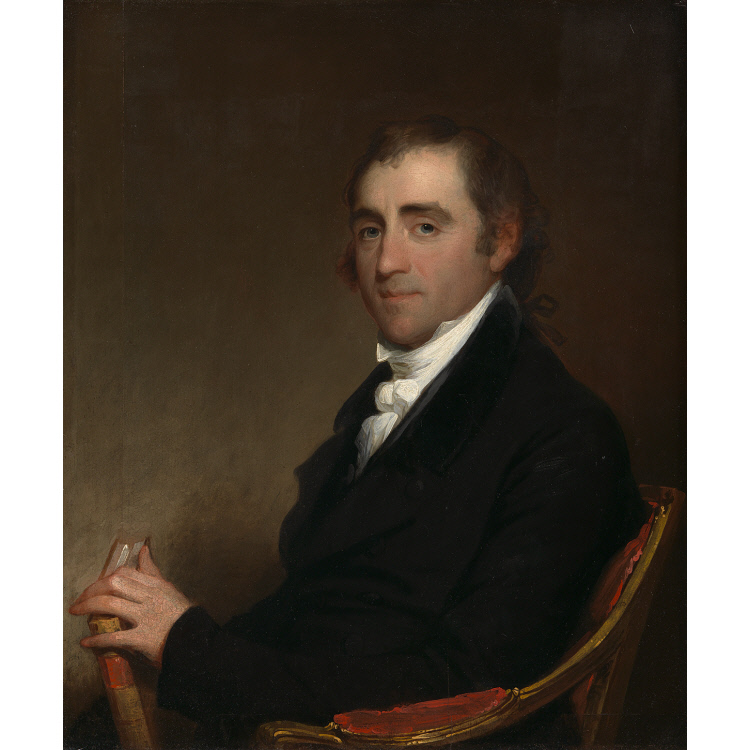
Fisher Ames was born in Dedham, Massachusetts, on April 9th of 1758. Ames found the golden age of his career as one of the first members of the United States House of Representatives, in which he served for six years. During his time as a representative, Ames married Frances Worthington with whom he would have six children.¹¹ It was through his involvement with the Federalist Party (and Early Republic politics more generally) that Ames came into contact with Hamilton. Ames was instantly enamored with him. He seemed to see Hamilton as the shepherd who guided the Federalist Party; without Hamilton to lead the way, the Federalists would become weak and divided. And as long as Hamilton led, Ames was happy to follow.¹²
But did Ames’s infatuation with Hamilton take on any elements of sexual or romantic attraction? There were two main things about Ames’s relationship with Hamilton that originally stood out to me.
The first is that when writing to Hamilton, Ames would become very deferential. Of the nine letters Ames wrote to Hamilton which are now on Founders Online, three of them end with Ames telling Hamilton that he felt he did not deserve a response, such as his letter of July 31st, 1791, which he ends by saying: “I write meaning that you only should read but I am not sure that the sentiments deserve your perusal. I will not desire an answer. I know your time is occupied sufficiently.”¹³ In his book Fisher Ames, Federalist and Statesman, Winfred E.A Bernhard remarks on this odd habit; he points out that this was extremely out of character for the normally brash and often bellicose politician.¹⁴ Ames demeaned himself this way for no one but Hamilton.
The second thing that caught my eye originally was a quote that writer Ron Chernow attributes to Ames, in which Hamilton is described as physically beautiful.¹⁵ Such comments about Hamilton’s body, combined with Ames’s awed and shy attitude towards Hamilton, would seem to suggest that at least Ames had feelings for Hamilton. Unfortunately, it seems Chernow may have misquoted. Chernow cites the source of his quote as being the New York Mirror, but this source gives no name for the author of the piece it published about Hamilton.¹⁶ Historian J.L Bell informed me that The Mirror may have been reprinting the piece from another publication, which published a piece on Fisher Ames right above the one about Hamilton.¹⁷ This may be where Chernow’s error came in. This was a big part of my evidence for Ames being sexually and/or romantically attracted to Hamilton. With this bit debunked, all I can say is that Ames perhaps had something of a platonic crush on Hamilton, of the sort that anyone might have for a prominent figure in their field, regardless of sexuality.
The Marquis de Lafayette
I’m guessing you know who the Marquis de Lafayette is, but if not, I have an article just about him that gives a good deal of biographical info. Lafayette came to America in 1776, and was allowed into the Army – tired as it was of young Frenchmen looking for glory – because many hoped the presence of such a prominent French noble might persuade France to side with the young nation. As part of this strategic move, Lafayette was sent to headquarters to stay with Washington and his military family.¹⁸ Washington quickly warmed to the young man, as did his aides, many of whom would remain friends with the Marquis for the rest of their lives. It was at this point of course that Lafayette met Alexander Hamilton and John Laurens, and they quickly formed an inseparable trio. Doubtlessly the three men grew to love each other, but in what ways? For now we’ll focus on Hamilton and Lafayette’s relationship, though theories that Lafayette was lovers with both men bounce around in the realm of LGBT+ history.
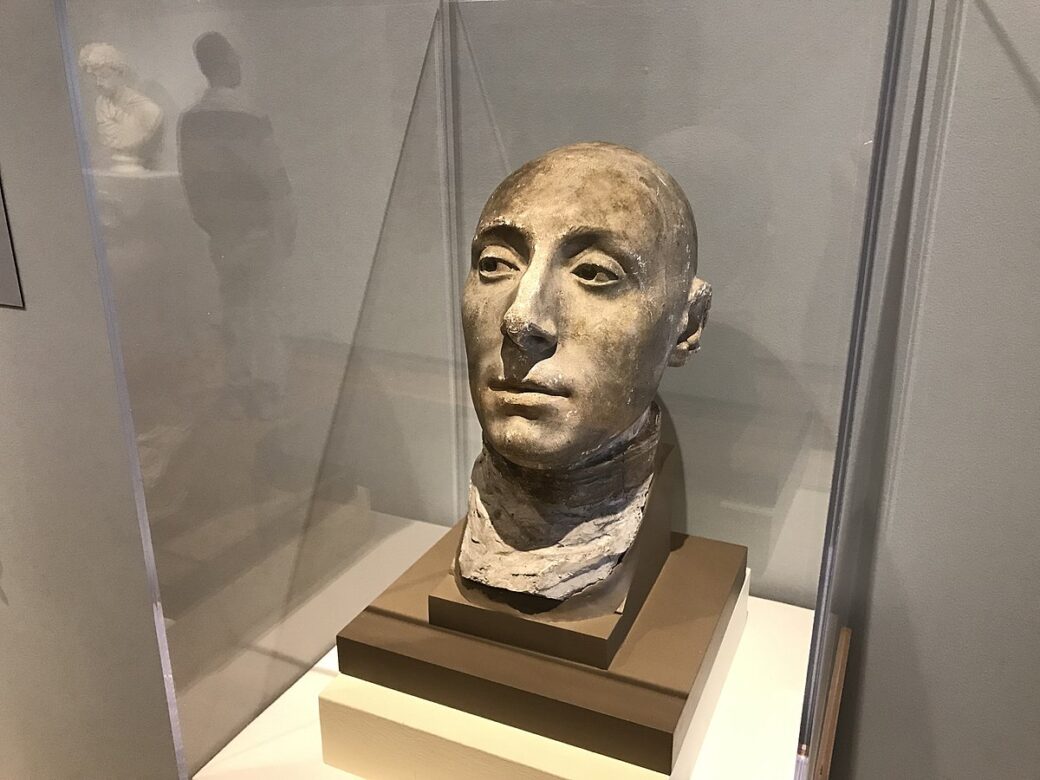
The first noteworthy thing I found while looking through Lafayette and Hamilton’s correspondence is in a letter Lafayette wrote to Hamilton on the 28th of November in 1780. Lafayette writes of recommending Hamilton for a recently vacant position as adjutant general, and then ends the letter assuring Hamilton of his affection for him. Lafayette tells Hamilton: “Before this campaign I was your friend and very intimate friend, agreable [sic] to the ideas of the World. Since my second voyage, my sentiment has increased to such a point, the world knows nothing about.”¹⁹ Taking this apart, there are two interesting bits. For one thing, Lafayette is saying that he and Hamilton were friends, then something changed, and now they are something else. The second part is that their relationship before, as friends, was something the world can understand, and something the world is okay with. Their relationship as whatever they are now, the world does not understand, or does not accept.
The next thing that might catch a reader’s attention is a quote from a letter Lafayette wrote to Hamilton while Hamilton was essentially on his honeymoon. At the beginning of this letter Lafayette is joking around about how Hamilton’s probably done nothing but have sex for the past few days. After a few lines of this Lafayette tells him: “But I will now Become the Bolder in interrupting your Amorous Occupations as exclusive of other Motives the importance of the Matters I have to Mention may Countenance your indulging your dear self with some Minutes Respite.”²⁰ In the middle of a joke about how Hamilton needs a break from all the sex, Lafayette slipped in something interesting. “As exclusive of other Motives”? Lafayette is interrupting Hamilton’s honeymoon because he has very important things to talk about, not because of any “other Motives.” What other motives does he think Hamilton might assume he has?
When considering whether Lafayette and Hamilton may have been lovers, it is important to note there may be other evidence Lafayette was not straight; many have suggested he may have been lovers with George Washington. This will perhaps be the topic of a later article, though I did discuss it in my article on Lafayette.
Elizabeth Schuyler
One thing that’s important to know about Hamilton’s early relationship with Elizabeth “Eliza” Schuyler is that Hamilton may have been actively looking for a wife when he met her. In January of 1780 – the same month Hamilton would meet Schuyler – Hamilton’s friend Samuel Blachley Webb wrote a poem in which he tells of Hamilton’s love for a young woman named Cornelia Lott. In his poem Webb calls Hamilton: “He that could bow to every shrine / And swear the last the most divine.”²¹ In other words, Hamilton had spent that winter madly in love with a new woman every week. Webb believes that in Lott, Hamilton may have finally found the woman who could tempt him to marriage. Webb was wrong, and according to Ron Chernow, Hamilton moved on to a woman named Polly not long after Webb wrote the poem.²² It may be worth noting that Lott’s father, Abraham Lott, was a prominent businessman in New York, and so while we know Hamilton bounced around to many different women during this time, it is also possible that they were all rich women.²³
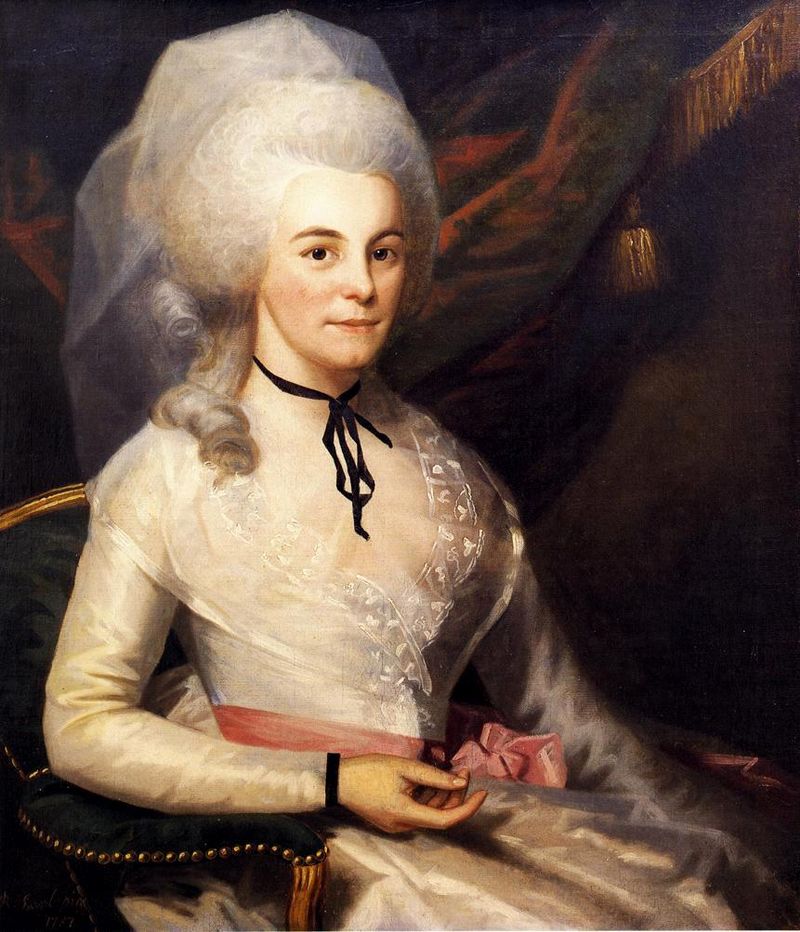
Hamilton had quite a bit to gain from finding himself a rich wife from a distinguished family. Familial connections played a large role in the politics of that era. Hamilton also needed the money. Hamilton had come to America and gotten an education all with the support of a fund organized by his cousin Ann Lytton. At the beginning of his involvement in the war, Hamilton used the last of that fund to finance his own artillery company. After that he survived on the pay he received from the army, which wasn’t much. Had Hamilton not married during the war, he may have once more found himself at the mercy of friends.
I point out these facts, that he was actively dating and that he needed a wife, to dispel some of the more romantic myths that surround his romance with Elizabeth Schuyler. It seems likely that Hamilton’s pursuit of Schuyler started out as something of a strategic move, and we can’t ignore this. But now that we’re looking at their relationship clearly, we must also take note of the overwhelming affection in Hamilton’s courtship letters. They include incredibly gushy things like: “Immediately after dinner, I stole from a croud [sic] of company to a solitary walk to be at leisure to think of you, and I have just returned to tell you by an express this moment going off that I have been doing so. You are certainly a little sorceress and have bewitched me, for you have made me disrelish every thing [sic] that used to please me, and have rendered me as restless and unsatisfied with all about me, as if I was the inhabitant of another world, and had nothing in common with this.”²⁴ They also include very sexy moments, like when he told his fiancee: “She [Eliza] will there I hope paint me her feelings without reserve—even in those tender moments of pillowed retirement, when her soul abstracted from every other object, delivers itself up to Love and to me—yet with all that delicacy which suits the purity of her mind and which is so conspicuous in whatever she does.”²⁵ (He’s literally encouraging her to have sexual fantasies about him.) One of his letters includes a rather emotional moment, in which he tells her: “I was once determined to let my existence and American liberty end together. My Betsey has given me a motive to outlive my pride…”²⁶ In other words, he was hoping to die in the war, and his soon-to-be wife gave him something to live for.
In my quest to learn about the sexuality of Alexander Hamilton, I’ve certainly considered a lot of suspects. Some of the men who’ve hovered in my mind for a long time turned out, once I carried out a proper investigation, to have been unlikely to have been anything besides a friend to Hamilton. On the other hand, with my investigation into Lafayette, a new name joined the maybe list. And all maybes aside, I still believe there is very strong evidence that Hamilton had some sort of romantic and/or sexual relationship with John Laurens. I also believe that – whatever else was going on – Hamilton had sexual and romantic feelings for his wife, even when they first got married. So I continue to believe Hamilton was attracted to at least two genders.
Many may argue that it does not matter who Alexander Hamilton was attracted to; he did a lot of things (good and bad) that continue to affect our country to this day, and none of those things involve sex or romance -not directly, anyway. But as we’ll see in my next few articles, sexuality may have played a surprising role in our country’s earliest politics. And before we can understand how Hamilton maneuvered in that landscape, we have to know what secrets he held within his own head and heart.
- Of him who promises much, much will be expected., Are there any letters we can view that show… (tumblr.com), An example of Laurens doing this: https://founders.archives.gov/documents/Hamilton/01-01-02-0673
- https://founders.archives.gov/documents/Hamilton/01-02-02-0100
- Quit your sword my friend, put on the toga — Those Five Words (tumblr.com)
- Of him who promises much, much will be expected., thelittlelionofvalleyforge: The Importance of… (tumblr.com)
- https://founders.archives.gov/documents/Hamilton/01-04-02-0144
- https://founders.archives.gov/documents/Hamilton/01-04-02-0172
- https://founders.archives.gov/documents/Hamilton/01-02-02-0742
- https://founders.archives.gov/documents/Hamilton/01-02-02-0768
- https://founders.archives.gov/documents/Hamilton/01-02-02-0845
- https://founders.archives.gov/documents/Hamilton/01-02-02-0860
- Fisher Ames | American author and politician | Britannica
- Fisher Ames: Federalist and Statesman, Winfred E.A Bernhard, 279, 287, https://archive.org/details/fisheramesfedera00bern
- https://founders.archives.gov/documents/Hamilton/01-08-02-0533
- Winfred E.A Bernhard, 176, https://archive.org/details/fisheramesfedera00bern
- Alexander Hamilton, Ron Chernow, 51, The Collegian – Alexander Hamilton (erenow.net)
- New York Mirror Vol. 2, New York Mirror – Google Books, Thanks to @ US ConLady over on Twitter for helping me find this!
- https://twitter.com/Boston1775/status/1448500825211424768?s=20
- Lafayette: Hero of Two Worlds, Olivier Bernier
- https://founders.archives.gov/documents/Hamilton/01-02-02-1004
- https://founders.archives.gov/documents/Hamilton/01-02-02-1004
- https://founders.archives.gov/documents/Hamilton/01-02-02-0586
- Alexander Hamilton, Ron Chernow, 129
- 1
- https://founders.archives.gov/documents/Hamilton/01-02-02-0808
- https://founders.archives.gov/documents/Hamilton/01-02-02-0834
- https://founders.archives.gov/documents/Hamilton/01-02-02-0843
Andrew
So it seems more like Ames might have had what we would consider a “celebrity crush” for Hamilton?
megangack
My thoughts exactly!